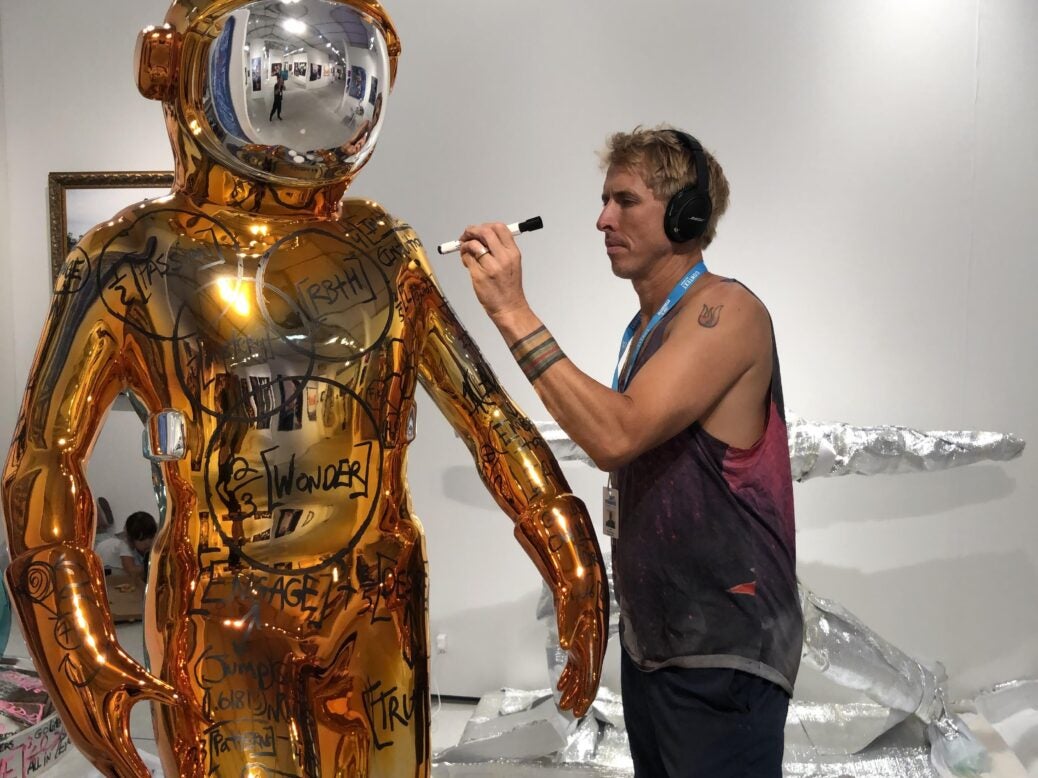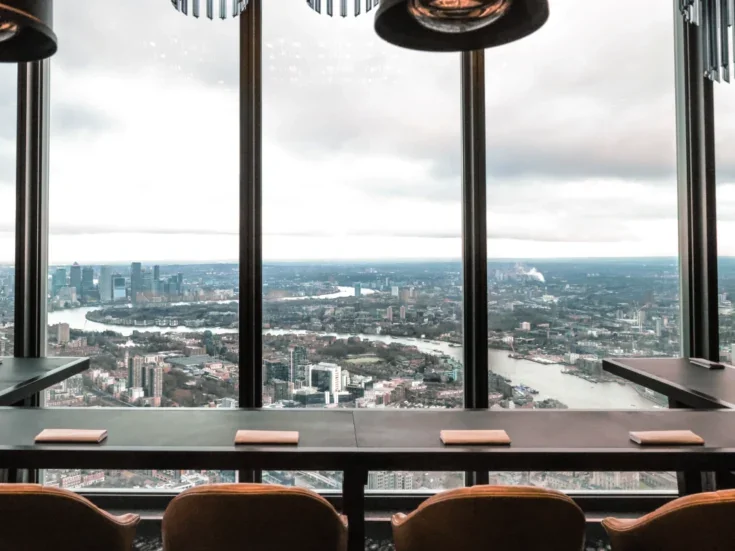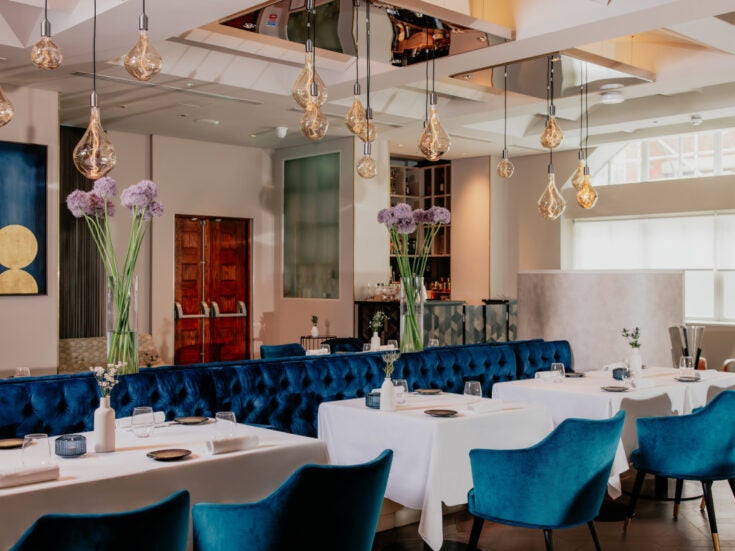
Brendan Murphy’s first solo UK show brings together linguistics, symbolism and lots of ideas. Arun Kakar talks to him to get the lowdown on what it all means
Experimentation with form and vibrancy in colour are just two of the hallmarks associated with the work of the exciting Brendan Murphy, whose first UK exhibition is currently taking place at the Maddox Gallery.
The US-born artist cut his teeth under the tutelage of some of New York’s leading painters such as Eric Fischl, David Salle, and Ross Bleckner, and has exhibited work worldwide.
Murphy has maintained a constancy of experimentation throughout his oeuvre: works often feature references to inspirations of formulas, equations, relationships and the ‘spectrum of human emotion’.
His London show, a Rush of Blood to the Head features sculpture and painting, united by a recurring theme of translating the ‘abstruse nature’ of emotion into various ‘imaginative formulas’.
To unpack what this all means, Spear’s caught up with Murphy, who talks candidly about working with Maddox Gallery – which is fast becoming one of London’s key private galleries – as well as his influences, approach, and thoughts on the London art scene.
Spear’s: Talk about how you came to put together A Rush of Blood to the Head
Murphy: l use the symbol ‘rbth’ in basically every painting that I do. I think when you describe this feeling, I guess it is more related to romance: you hear people saying they get butterflies and the rush of blood to the head simply represents that feeling of anticipation and excitement.
As it relates to my process, it’s just the working out and trying to figure out – I’m intrigued by that. I think we all share similarities, in how we process emotions and how we land on feelings, so that was one element of paintings. It seemed like a good title.
S: Your work incorporates various symbols and linguistic elements. How do you go about bringing this into your work?
M: My process of the actual chalkboard paintings [is to] lay down a template and pull from an archive of different symbols. Those symbols, many of which have been with us for a long time, are themselves very recognisable, not necessarily in a conscious way but by embedding them in the paintings. That tends to connect with people because they’ll say something like ‘it seems so familiar to me’.
It was a kind of deliberate move by me, by using symbols that we are all very familiar with, so there is an actual purpose to it. I do a lot with the golden ratio, the Fibonacci series – those are in a lot of my pieces.
S: I suppose that relates to the themes of universality you’ve spoken about in relation to your work.
M: Absolutely. It’s been around forever and it describes how patterns repeat – it’s some heavy stuff!
There’s a mathematical foundation behind it. But again, I think for [artistic] license it is very liquid. Thoughts and feelings and how we arrive on them, that process is also very liquid. It’s not ‘A plus B equals C’.
I think we all share a certain anxiety and on some level, we’re all winging it emotionally. After having done a few of these chalkboard pieces and using text in that way, I think it definitely draws [the audience] in – there is a sense of familiarity.
They can’t really put their finger on why. And then I try and make, just from an aesthetic standpoint, just a really cool looking piece of work. Worst case it survives on all those other levels and just looks good.
S: You’ve spoken about how art has the potential to transmit positive energy. How do you incorporate this into your own practice?
M: I just think positive energy and creating it, being around it, has immediate results. I don’t think anything I’m saying is new: I’ve been witness to it, I’ve participated in it, and it’s an amazing powerful thing in our lives when you’re around people like that, and you believe certain things in a positive way.
You’re manifesting a certain result. I think a lot of people and – I’m not judging, we’re all part of it –it’s a lot more common to worry about what could happen. There is a lot of worry and threat and stress that is created and it doesn’t actually exist. There’s a lot of resistance out there that is not even real, it is created in the mind.
Positive energy and positive thoughts counteract that. Last night we had the opening, and there was a lot of great energy in that room, people were exchanging ideas, and that’s pretty special and powerful.
S: how did you put together this latest show in the gallery space?
Because my relationship with Maddox is relatively new, it was definitely a lean towards giving them more work than I generally would in another show. I wanted to give them a robust inventory, so that included painting and sculptures. There was a big, logistical operation to get everything from the different studios around the world.
I don’t know how good one of my paintings are, but if I can create a show where the paintings are bouncing off each other and then bouncing off the sculpture, I feel like I’m covering my tracks a little bit. I might [have gotten] more nervous if I only showed three paintings.
S: How was the experience of working with Maddox?
M: We’re trying to really change the art game. It is one of the last businesses that hasn’t been disrupted. Maddox’s approach is something also refreshing and disruptive. They believe in the artist first, and that’s not normal in my business. Normally the relationship between the artist and gallery is very contentious. It’s been refreshing also to deal with a team of staff that sees me in the same way as they see a great footballer on a team, he’s a valued asset. And without him, there is no team. And I’m not alone – they have other artists. In terms of sharing a similar message between me and the gallery, when you have all that, you make better work.
S: This is your first London exhibition. How are you enjoying being in town?
M: It’s so far so good! There is a certain appreciation for the creative here, and I think they value artists which is very refreshing. Whenever you’re in an environment like that, you can be critiqued and you can be beaten up a little bit form a critics standpoint, otherwise, it is very refreshing to be a part of a city like that. Not many cities have that energy.
Rush of Blood to the Head by Brendan Murphy runs until the 20th of July at the Maddox Gallery in Mayfair.
Arun Kakar writes for Spear’s












